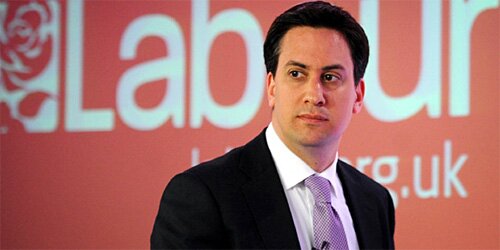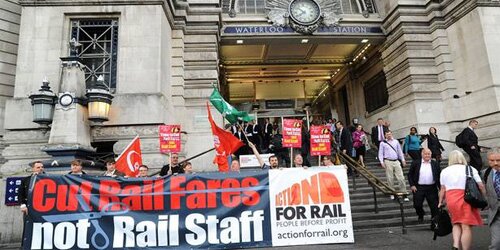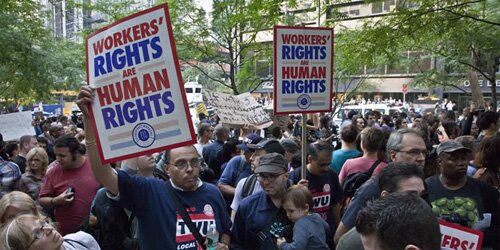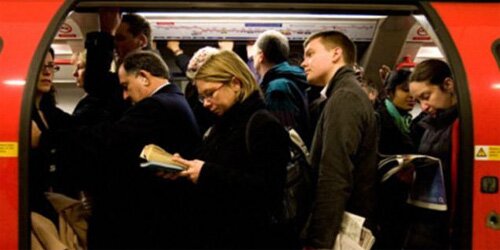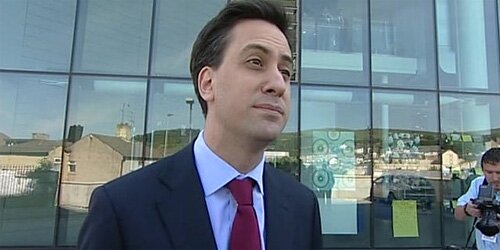Recent Articles
How Boris keeps selling off chunks of London housing to rich investors
Boris Johnson loves property investors because they help developers build homes. But homes for whom? The reality is that these expensive homes benefit rich investors and developers far more than ordinary Londoners, who are seeing their city sold off chunk by chunk.
Today I asked the Mayor about One, The Elephant, a 37 storey tower block with 284 flats built on council owned land. He signed it off last November, and launched the construction on site this August saying it would “bring quality homes into the area”.
But its studio flats will start at £330,000, and were marketed in Hong Kong and Singapore before they went on sale in London. That price is twelve times the average income in Southwark, and even further from the incomes of residents in the Elephant area.
There is no affordable housing at all, just a contribution towards some affordable homes elsewhere in the local borough of Southwark.
In the officer’s report to local councillors, the reason was clear. If they mixed affordable and private housing together, it would have “significant implications on the values of the private residential properties” – the developers wouldn’t get as much profit because investors don’t want flats next to the hoi polloi of London.
Some developers have actually put separate entrances and lifts in for affordable housing, like servants having to enter via the back door in Edwardian times. But the council officer’s report said the “practical and financial implications” ruled this out.
Elephant and Castle used to be called the ‘Piccadilly of the South’, and at the moment seventy per cent of the residents in the area live in secure, affordable social housing. In the new “regeneration” projects around the Elephant, only eight per cent will be social housing.
Londoners just get crumbs from the property feast, as I argued in a detailed report published last month.
The Mayor should threaten to refuse these applications unless they offer enough affordable housing. He should also lobby for taxes on investors to damp down demand, for a social housing budget big enough to actually meet London’s needs, and for regulation to stabilise private rents.
How a living wage would reduce the UK’s benefits bill
The measly 1% rise in the national minimum wage for young people is only going to make work less attractive in London, and push up the benefit bill. If the minimum wage was raised to a genuine living wage, the Government would be £2.3bn better off each year.
Raising the minimum wage below inflation is bound to put a strain on the in-work benefits bill. This will be most true in places like London, where the cost of living is far above the national average.
Imagine you’re 19 years old, it’s October and you’re earning the new minimum wage. Each month over half of your take-home pay will go on rent for a room in a flatshare, costing you at least £100 more than the national average.
A couple both earning the minimum wage would be left with £89 a month after paying the rent on a 3 bed home in London. The national average rent would leave them with £1,130. Try to imagine paying your all the month’s bills – council tax, utilities, transport, clothes, food – out of the remaining £89.
You can see just how unaffordable London’s rents are on my rent map.
We square the circle with tax credits, housing benefit and other welfare payments. We subsidise landlords’ high rents and employers’ low wages, but neither the Mayor of London nor the Government are really tackling.
As in recent years, low wages and high rents will just drive up the housing benefit bill and make life even harder for the estimated 700,000 people earning less than the London Living Wage in the capital.
But the IPPR and Resolution Foundation looked at whether this makes sense for the public purse.
They calculated that if the minimum wage was a genuine living wage, the gross savings on the benefit bill and the extra tax revenue would add up to £3.6bn a year. Take off the higher public sector wage bill and you get a net saving of £2.2bn.
A compulsory living wage could be combined with policies to reduce rent rises, like stabilising rent controls common on the continent. The Mayor of London should be shouting these ideas from the rooftops.
What Boris could do, but isn’t doing, to protect the vulnerable in London
Today a large number of damaging changes to the social security safety net come into force, with more expected through the year. I have spent ten days casting a light on the damage these will do. But there is an alternative.
The Mayor of London set out his reasons for supporting the welfare reforms: reward and incentivise work, drive down rents, protect those who need it most and deliver savings to the London taxpayer.
But the welfare reforms fail to meet these tests. The housing benefit cuts, combined with the Mayor’s yearly inflation busting transport fare increases, are making it harder for people on low incomes to live and work in inner London. Rents in the cheapest part of London’s private rented sector rose 6% in the last year, twice as fast as inflation.
Those most in need of protection are already suffering. The housing benefit bill has continued to rise as more working people sign on to cope with low pay and high rents.
We could incentivise work by ensuring it covers the cost of living, for example by raising the National Minimum Wage to a living wage.
This would put an extra £268 a month into the pockets of a living wage worker in London. We could ensure our social security system incentivises work by scrapping the complicated and costly means-testing and introducing a citizen’s income.
The best way to drive down rents is to do so directly, not to reduce the spending power of the poorest Londoners. The Mayor could press for councils to be given the freedom and funds to build tens of thousands of low cost homes for rent and sale.
He could look at the more secure tenure and the various smart rent controls used in other European countries, and lobby for a private rented sector fit for a quarter of London’s households.
These measures would protect those who need it most and deliver savings by reducing the housing benefit bill.
The Mayor is spending £3 million investigating ways to expand airport capacity around London. He needs to put the same money and imagination into helping his most hard-pressed constituents.
April will see the start of London’s #socialcleansing – we need to expose these changes
On the 1st April the Government will introduce a raft of changes to our welfare system, arguably the largest since the 1940s. Despite all the press coverage of the bedroom tax, and endless stories about scroungers on the make or families stuck in B&Bs, the public are still in the dark about the full range of changes coming in and the impacts they will have.
The housing benefit caps are already making parts of inner London a no-go zone for people on low incomes, a point the New Policy Institute backed up my warning on. The 1st of April changes, combined with extension of the right to buy discounts, will accelerate this process.
Councils are struggling to understand how so many overlapping changes will work, and people who receive help with childcare or housing costs are struggling to understand how they will be affected.
These changes have been brought in on the back of a distorted public debate. Other politicians and most of the media have paid a lot of attention to the cost of welfare, extreme cases of fraud or laziness, and what they believe to be a ‘culture’ of milking the system.
People have been led to believe that the welfare system has supported four million people who have never bothered to work, but most of those four million are students, people unable to work due to disability or people looking after their family.
Last year a study found that a significant number of people think more than half of benefit claims are fraudulent, when the actual rate is only 1%.
So I am going to spend ten days leading up to the 1st April trying to shine some light on the state of the welfare system in London and how these changes will affect our city.
As a London Assembly Member, I will be focussing on the impacts in London, and the role the Mayor of London has played in supporting the welfare cuts.
I’ll expose how little we actually know about the impacts of the changes, the role of the Mayor of London has played since his famous ‘Kosovo-style ethnic cleansing’ remark, the myths the Government and Mayor have both put about to justify the changes, and finally a different approach to welfare that the Mayor could push for.
I’ll also be tweeting about this every day. I hope that others will join me, using the hashtag #socialcleansing on social networks to shine a light on similar stories from around London and the rest of the country.
Ten myths about the housing benefit reforms in London
Myth one: housing benefit claimants are all lazy scroungers
Ministers from both the previous and current government have argued for housing benefit caps by saying we shouldn’t help people to live in houses “that working families could never afford”. In fact, 39% of housing benefit claimants in London have jobs, and many others are retired, caring for children, sick or disabled. In the last two years an extra 52,000 working people have started to claim housing benefit in London, probably connected to the fact that private rents have risen far faster than the minimum wage, which has only crept up by 5%.
Myth two: the rising housing benefit bill was caused by greedy tenants
In the lead-up to the 2010 Comprehensive Spending Review the papers were full of stories about benefit claimants living out of mansions in expensive parts of London. But even then there were only 139 families in London receiving over £50,000 in rent a year out of over 800,000 benefit claimants. Only 4% received more than £20,000 a year, according to the DWP. There were another 243,000 households estimated to be hit by the cuts who were receiving less than £20,000.
Myth three: the rising housing benefit bill was caused by greedy landlords
Analysis by the Department for Work and Pensions found that 70% of the rise was due to more claimants, while only 13% of the rise could be attributed to landlords increasing rents to get more out of the system. Figures used by the Government to suggest that housing benefit has driven up rents turn out to be extremely shaky, based on unrepresentative samples. Since the caps and cuts to housing benefits were introduced, rents have risen far above inflation in London. The causes are complicated – high demand, low supply, short term rental contracts stoking up a volatile market, and many other factors. But benefits aren’t the primary cause.
Myth four: low paid workers could move to cheaper parts of London
It sounds fair, but there isn’t a single borough in London where a cheaper (lower quartile) shared room in a flat would be affordable for a minimum wage worker. Private rents are simply too high for low wage workers. Even on the London Living Wage of £8.30/hour, renting in a flatshare in most of inner London would take up more than the standard definition of an affordable rent – 35% of take-home pay, leaving the rest for council tax, bills, travel, food and leisure.
Myth five: there are plenty of cheaper homes about
In theory the cheaper 30% of homes in a “broad market rental area” should be available to claimants. But in July the Hackney Citizens Advice Bureau did a snapshot survey of 1,585 properties to let in their borough. They found that there were only 142 homes that fell within the new benefit caps, 9% of the total. To make things worse, most of the landlords they spoke to wouldn’t let their properties to benefit claimants, leaving people chasing only 14 homes in the entire borough, less than 1% of those on the market. Research by the Chartered Institute of Housing published in January predicted a similar situation this year across London as cuts bite. For example, they calculated that 17,000 people would be chasing 10,000 properties in Croydon.
Myth six: this is the only fair way to reduce the benefit bill (part one)
Rather than cutting benefit payments, we could reduce the housing benefit bill by reducing rents. Unfortunately the Mayor has ruled out even looking at private rented regulation of the sort used in most other European countries. Another option is to build more social housing, which the Mayor’s housing advisor has said would “clearly help reduce the housing benefit bill”. If we could move every private tenant on housing benefit across the UK into council housing overnight, the lower rents alone would save the Exchequer £2.7bn in housing benefit payments.
Myth seven: this is the only fair way to reduce the benefit bill (part two)
Another way to reduce the benefit bill would be to help more people find work, and to ensure that they are actually paid enough to cover the rent. Using my interactive London Rents Map, you can see that a worker on the National Minimum Wage of £6.08/hour cannot afford a cheaper (lower quartile) room in a shared flat in any borough in London. But if they were paid the London Living Wage of £8.30/hour then fifteen boroughs would become affordable.
Myth eight: social tenants enjoy expensive subsidies as well
The recently departed housing minister suggested that social housing should be rebranded as “taxpayer subsidised housing”. But in recent years council housing has actually been in surplus, making a net contribution of £113m to the Treasury in 2009/10. The main subsidy is the grant used to cover part of the cost of building the homes, but that is more than made up by rent payments and the reduced benefit bill. If all those social tenants receiving benefits were to rent privately it would cost an extra £5.3bn a year in housing benefit payments.
Myth nine: the cuts are helping
When this Government came to power they vowed to cut the benefit bill by nearly £2bn by 2015. But since announcing their cuts and caps the bill has actually gone up by £2.5bn, largely because of the growing number of working households who need to claim the benefit to keep a roof over their head.
Myth ten: the Government’s housing agenda will save money
Instead of building lots of social housing or raising the minimum wage, the Government has actually cut investment in housing and decided to raise rents. The new London affordable housing budget for 2011-15 represented a 66% cut in the annual grant compared to the 2008-11 funding. But the Mayor still hopes to build a similar number of homes each year as he did with the previous, much larger grant. Rents will rise to square the circle, meaning that more tenants will be dependent on more housing benefit payments to keep up. Even the Prime Minister had to admit that this contradiction could increase the benefit bill.
—
This document sets out my individual views as an Assembly member and not the agreed views of the full Assembly.
Fully referenced version, and London Rents Map text
How Boris could do something about high pay in London
The Mayor of London is well placed to do something about high pay, which justly took up a lot of newsprint yesterday.
London is the most unequal region of the UK, with a fifth of its workers earning less than the living wage and a tiny minority getting inflation-busting pay rises year after year.
If the Mayor wanted to take a lead, one idea I’ve written up would be to set up a Fair Pay Mark – recognising companies that disclose their pay multiples and adopt fair pay policies such as those put forward by the High Pay Commission.
continue reading… »
Whatever happened to Mayor Boris’ green promises?
When Mayor Boris Johnson addressed the Environment Agency in November 2008, it seemed he had converted to “the religion of climate change”, and put his indifference to environmental action behind him. So has he delivered?
Unfortunately the Mayor is a politician who likes to hype one or two catchy ideas. One first appeared in the long list of promises made in that speech – to spend £100m in his four-year term helping households to install insulation. The second is the target he then set – to insulate 200,000 homes by 2012.
continue reading… »
Boris talks a lot about climate change, but will he spend the money?
The Mayor’s latest draft of his Climate Change Mitigation and Energy Strategy was published last Friday without so much as a whisper in the press.
This worthy wishlist sets out how London could cut its carbon dioxide emissions by 60% by 2025, creating tens of thousands of jobs in the process.
But there are snags:
continue reading… »
Boris’s climate and transport strategy fails miserably
The Mayor of London’s climate change mitigation strategy (launched Monday) rightly recognises that to get to his target of a 60% reduction in carbon emissions in London by 2025, government policy and money will have to play a major part.
But he’s scaled back reductions made through his own programmes to the extent that government policy plus mayoral policy still leave a 5m tonne CO2 gap in what needs to be done.
In particular, the Mayor’s energy efficiency programmes rely on a major injection of government funding beyond 2012.
For example:
- He is relying on attracting £200m of public money to take forward his homes energy efficiency programme.
- He is also reliant on national policy to introduce new measures to help householders and businesses finance energy efficiency improvements.
NEWS ARTICLES ARCHIVE





